
Japanese Festivals: Capturing the Extraordinary with Photographer Haga Hinata
Guide to Japan Culture History- English
- 日本語
- 简体字
- 繁體字
- Français
- Español
- العربية
- Русский
Extraordinary Moments
I have photographed festivals in all 47 Japanese prefectures and 48 countries across the world. I took over from my father as the second head of the Haga Library, which holds over 300,000 photographs of more than 1,500 festivals and carnivals.
My father Haga Hideo was a photographer of folk culture who spent 70 years of his life taking pictures of Japanese festivals, including the major subject of his life’s work, raihōshin (ritual visit of deities). Unlike my father, I did not aspire to become a photographer, and in my twenties I studied cultural anthropology in the United States. What changed my mind was a village festival I encountered in 1981 on the Yucatán Peninsula in Mexico as an exchange student.
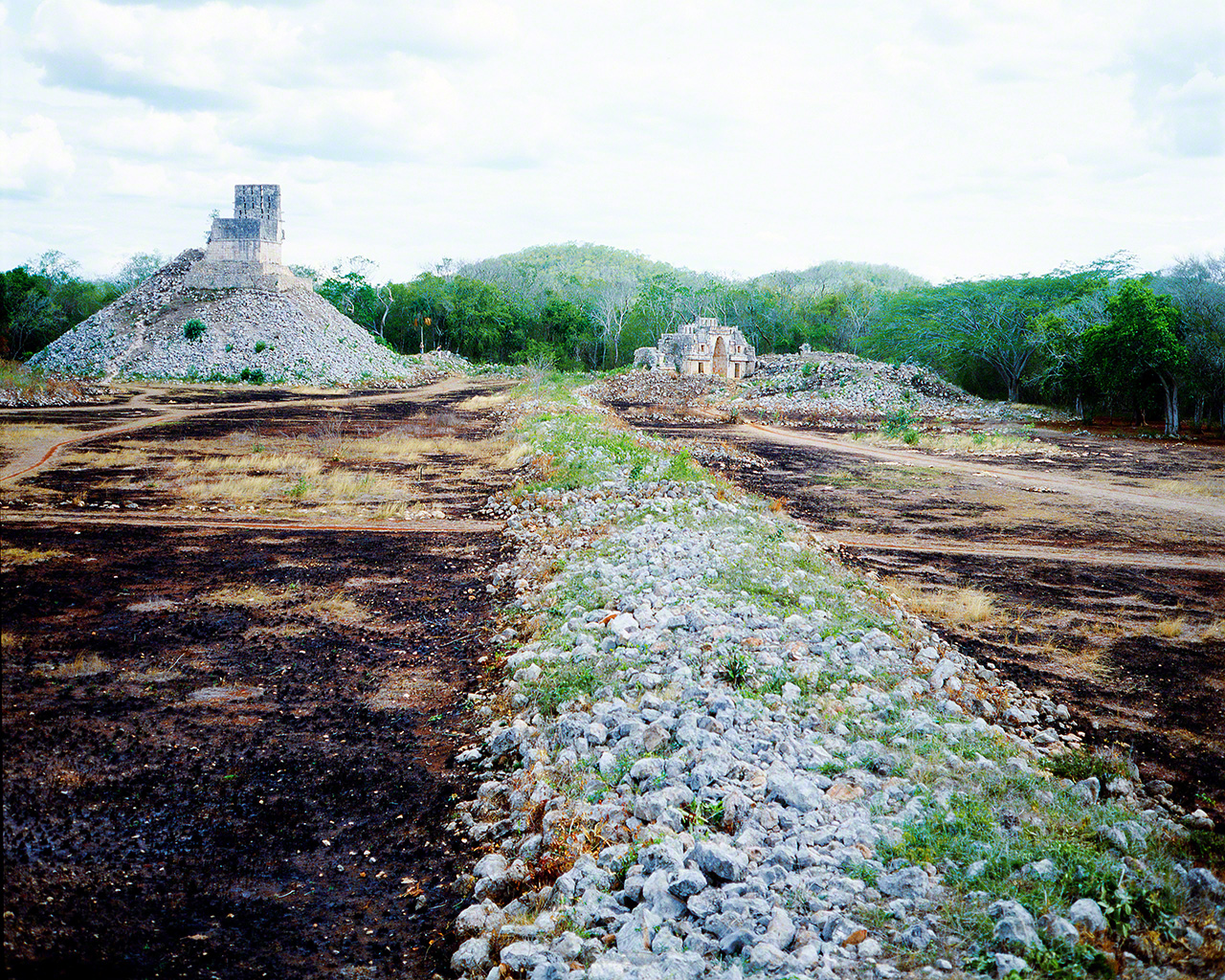
Photograph taken by Haga in 1981 when he was involved in an archaeological dig of a paved road at a Mayan site in Mexico. His experiences here led to his becoming a photographer.
At the time I was involved in a dig at a Mayan site as an assistant to my professor. The people in a nearby village lived in rows of simple houses and led tranquil lives that seemed to me to have remained unchanged for hundreds of years. But one night, lively music came from the village and the people performed twirling dances in white costumes. In their exhilarated expressions, I sensed their joy focused in this small village festival.
My feeling then was triggered by the gap between their behavior in the day and at night, and was similar to the shock one feels in Japan when confronted with the difference between mundane, everyday life, which Japanese call ke, and the extraordinary, sacred world of festivals, referred to as hare. My experience in Mexico led me to seek out festivals throughout the world and photograph the joy found in the extraordinary. My ultimate goal was to photograph carnivals on all five continents; these occasions are “pinnacles of the extraordinary” during which all forms of revelry are permitted regardless of how outlandish they may seem.

A street parade with floats decorated with royal motifs. Photographed during a carnival in the French city of Nice.
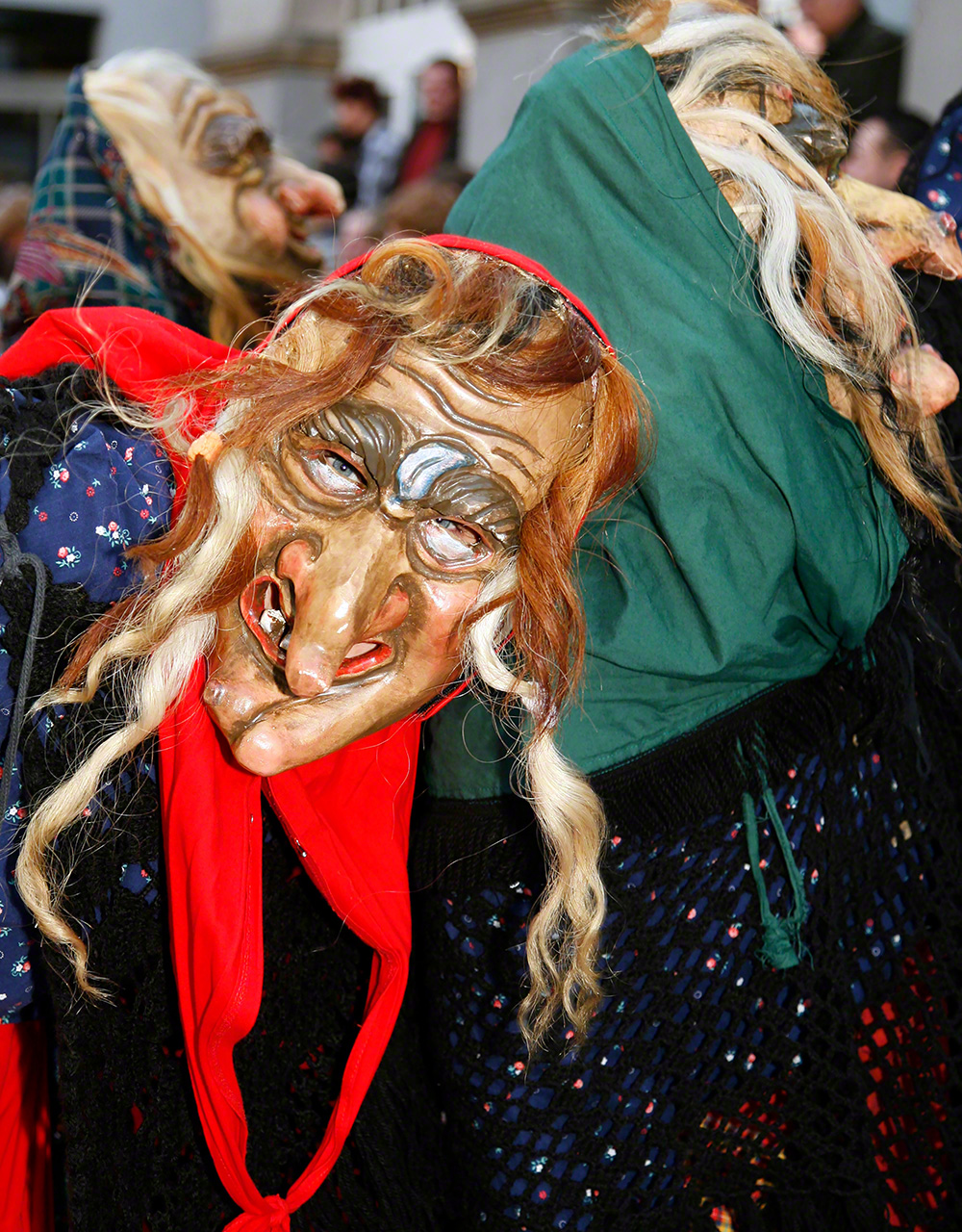
A demon at a carnival in Germany, where people dressed in traditional clothing and costumes parade through the city.
The carnival in Rio de Janeiro, the world’s largest celebration and the one that I had reserved for last, was particularly impressive. Tens of thousands of people dance the samba in a rhythm like surging waves as they parade along the 800-meter long carnival route. The love, desire, hope, sadness, and anxiety that emanated from their bodies formed balls of energy that—along with the pulsing beat of the samba—shook me to my core. I felt how they endured their routine daily lives all year and then let their emotions free on this one day of joy.
As I traveled the world, I noticed that festivals fell into several patterns in the many countries where the major religion was monotheistic. I came to understand that there were particular types where the people were indulging their feelings of happiness and joy.
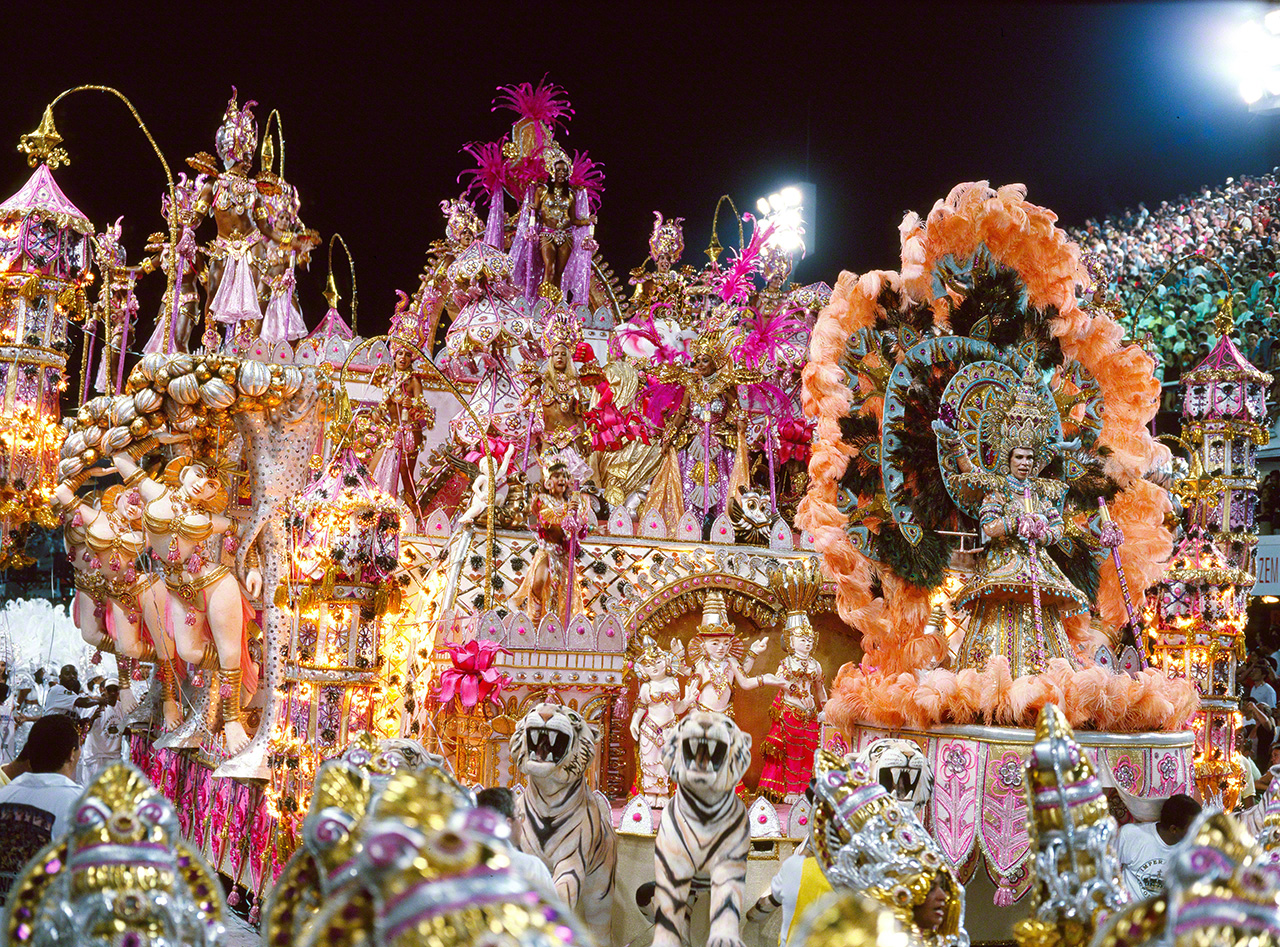
Carnival in Rio de Janeiro, Brazil. In addition to the samba, the gorgeously decorated floats are a major attraction.
Diversity of Deities
After returning to Japan in 2007 for my photo exhibition Carnivals of the World, I began to photograph Japanese festivals in earnest.
One of their remarkable features is the variety of forms that deities appear in. Mikoshi (portable shrines) may be the most well-known, but deities can also be contained or appear in the form of boulders, trees, and rice paddies, as well as gohei (wooden rods with zig-zag shaped paper streamers attached), paper flowers, or even humans. The great variety is such that is difficult to organize into patterns or categories.
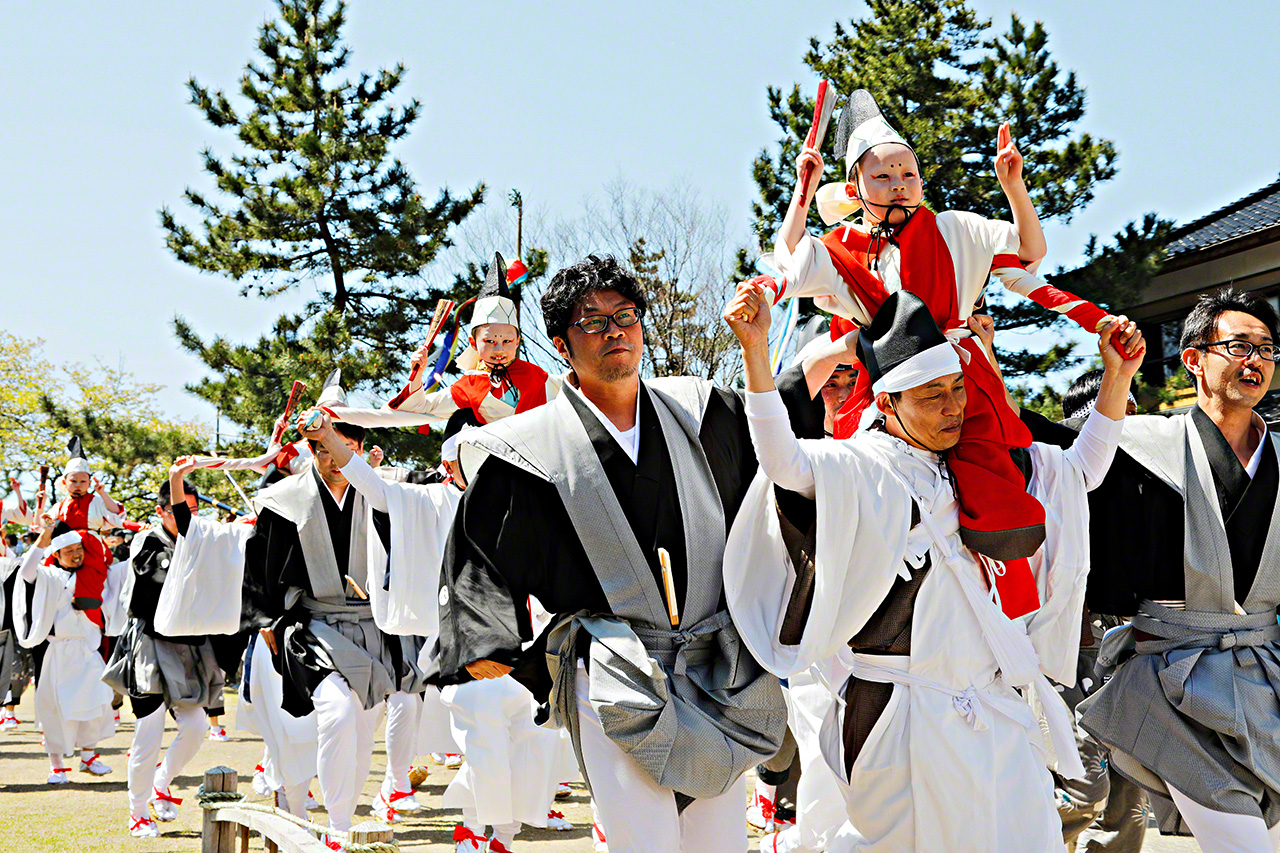
Toddlers being carried through the streets during the Spring Festival (popularly known as the Nō Festival and held on April 24) at Nōhakusan Shrine in Itoigawa, Niigata Prefecture.
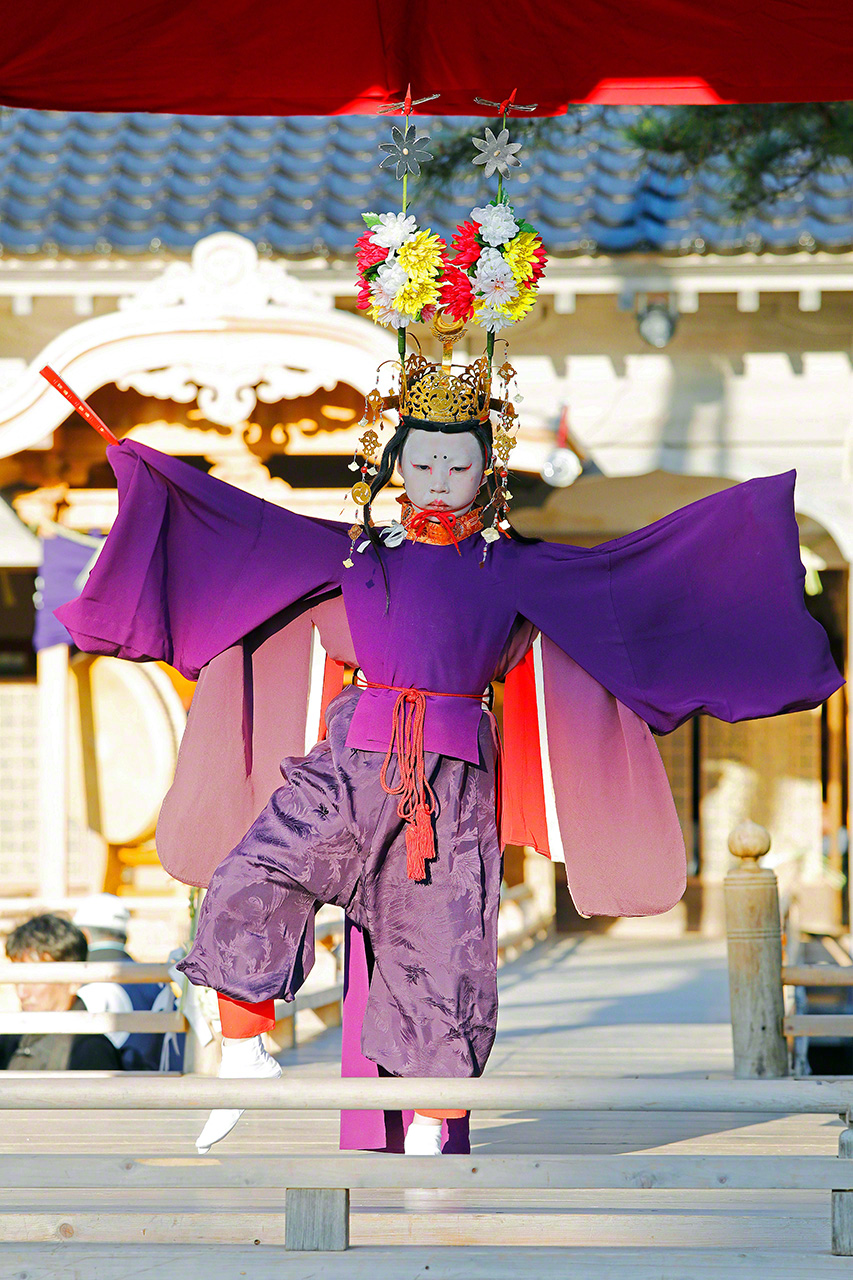
Children’s Dance at the Nō Festival. The flowers on the dancers’ crowns are offered to the deity of the shrine.
A French journalist struggled to report what was happening, writing “How can I describe the scene of the children possessed by many deities? … In my country, we would call an exorcist.”
In Japan, in addition to the deities that occupy specific geographical locations and shrines, there are also those that appear during each of the seasons, with each event being marked with festivals. Throughout Japan rituals are held in early spring to welcome the tanokami, or the spirit of the rice plants. If such a thing were to happen abroad, a shrine or temple might be erected at the location where the deity appeared for people to worship there for hundreds of years.
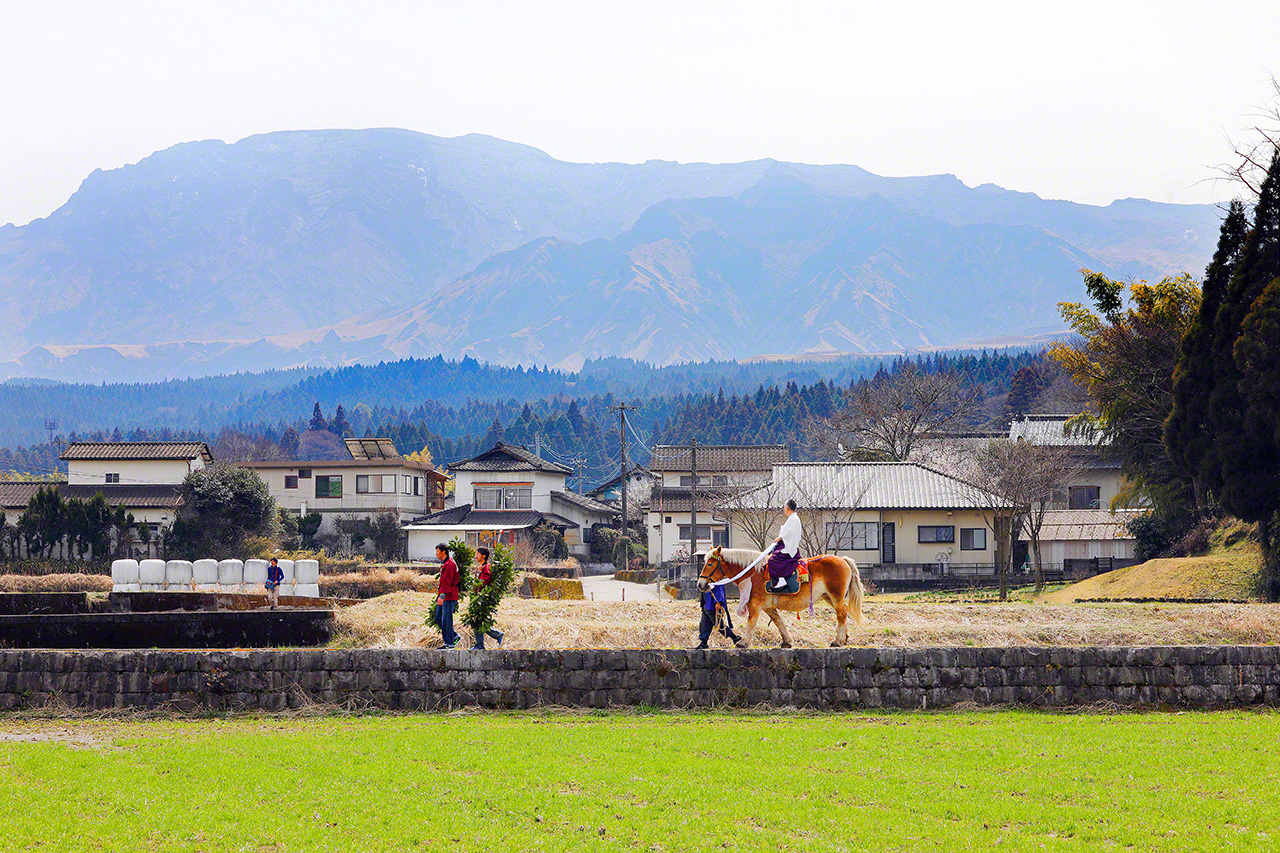
The Tatsukuri festival of Aso Shrine in Kumamoto Prefecture, held in March each year, promises a good harvest through a wedding ceremony for deities. Villagers carry an oak branch that symbolizes the body of a female deity toward the male deity.
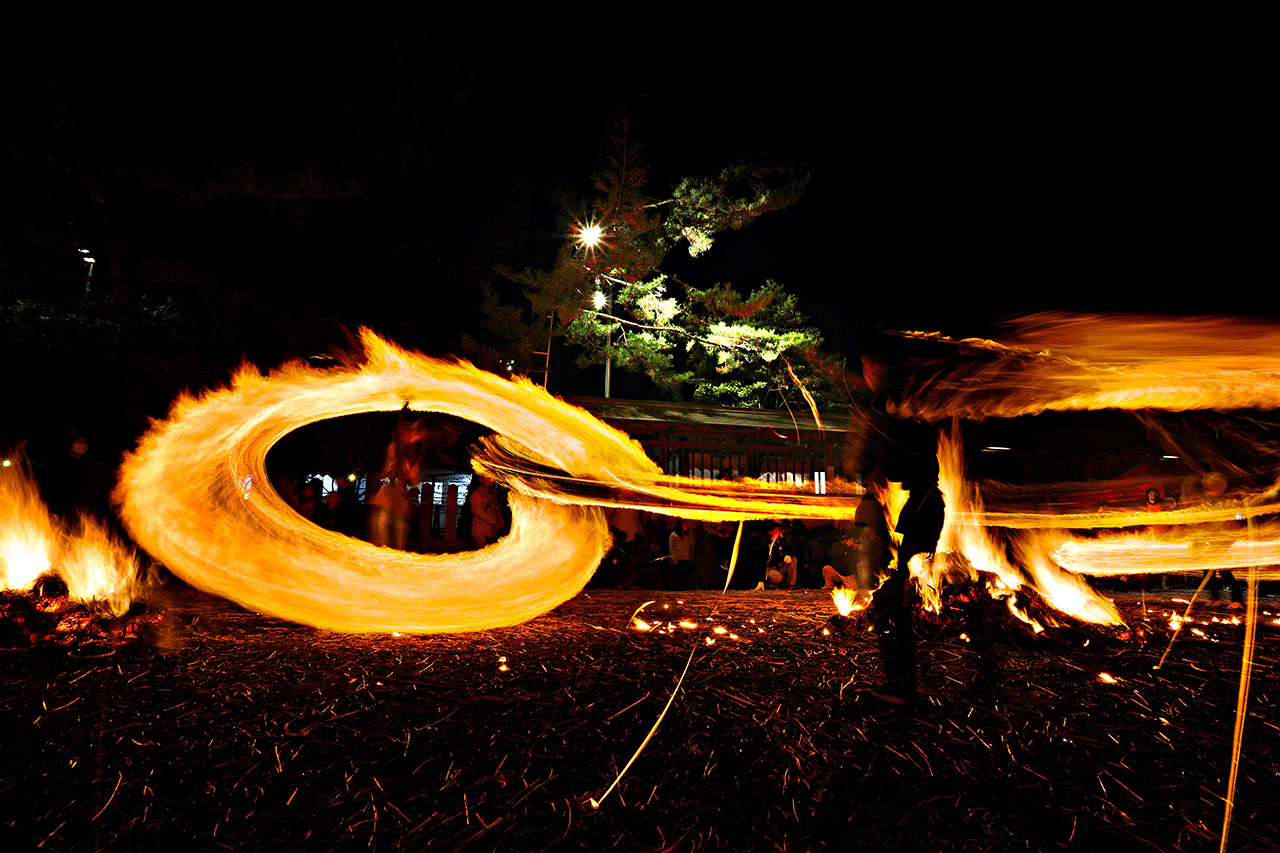
During the Shintō ritual that marks the highlight of the Tatsukuri festival, the swinging of a flaming rope celebrates the arrival of the female deity.
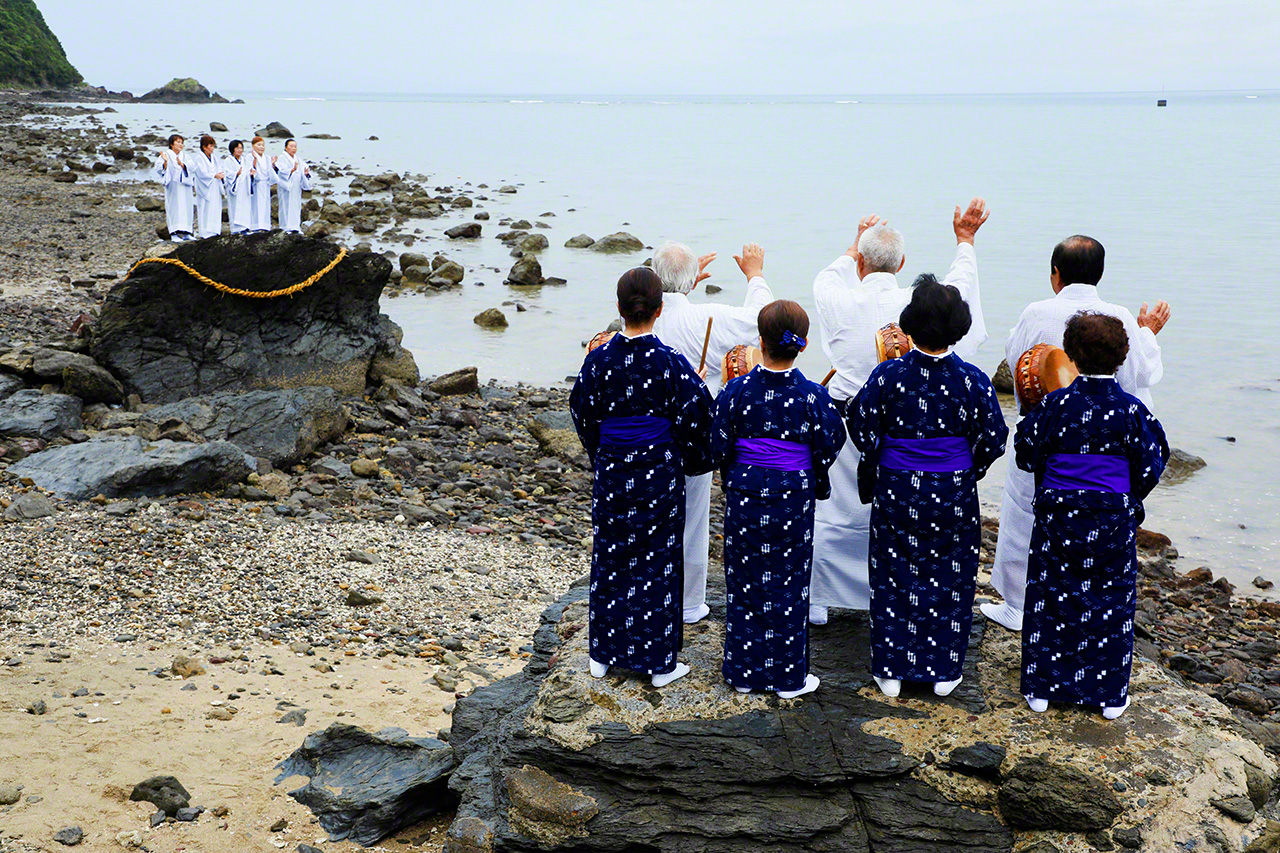
The Akina Arasetsu ritual on the island of Amami Ōshima (Kagoshima Prefecture), which is held during the lunar calendar month of August, is a harvest festival that preserves the original form of the Japanese performing arts. In the evening, performers welcome deities from across the sea with repeated singing and a “hand dance.”
The sheer number of festivals in Japan may be the highest in the world. The festivals open to public viewing at Shintō shrines include major annual festivals held at New Year and each of the seasons. As there are approximately 80,000 shrines registered with the Association of Shintō Shrines, the number of festivals held annually is at a minimum in excess of 300,000. When one takes into account festivals held within shrines such as the monthly tsukinamisai, folk religion festivals, festivals held in municipalities for the benefit of tourists, and Buddhist services held at temples, one sees that the number of festivals that take place in Japan is almost unimaginably large.
As an island country that has gradually adopted elements of other cultures, Japan has developed a uniquely tolerant culture of belief. The Japanese people have accepted a number of diverse belief systems that were originally based on animism—which holds that deities reside in all things—to which countless numbers of ancient deities were added and which were then further augmented by the introduction of Buddhism from the continent. As there are so many objects of worship, variation in the festivals and performance arts designed to please these deities increased. This cultural background is vastly different from that of most monotheistic countries.

The Oni Festival at the Takisanji temple in Okazaki, Aichi Prefecture, is held in February around the seventh day of the first month on the lunar calendar. During the festival, a good harvest is promised when a demon holding a large kagami mochi (round rice cake) appears at the temple amid blazing torches.
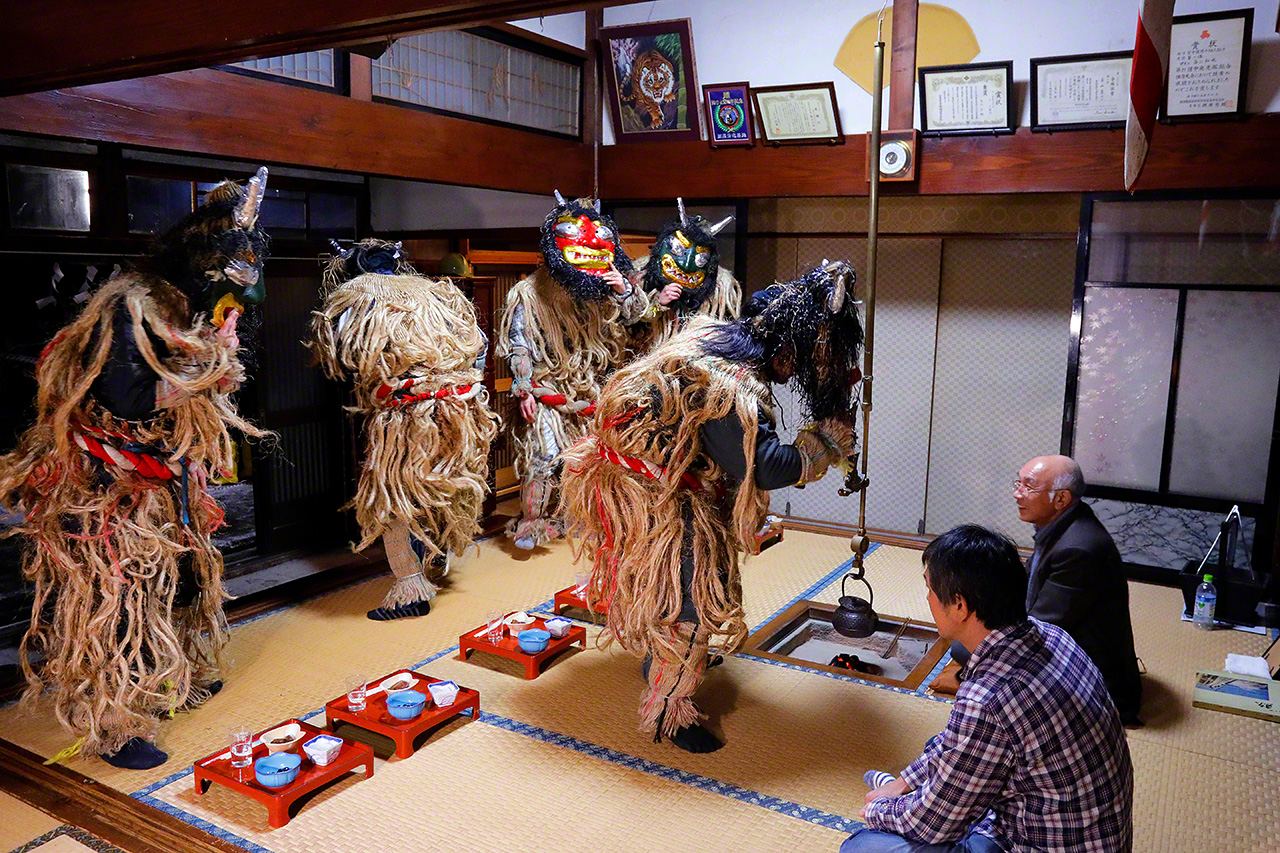
During the traditional namahage ritual held in the Oga region of Akita Prefecture, creatures called oni bring good luck by visiting homes and admonishing the lazy. It was included in “Raihōshin: Ritual Visits of Deities in Masks and Costumes,” a set of 10 rituals added to the UNESCO representative list of the Intangible Cultural Heritage of Humanity in 2018.
For example, the Roman Empire, which adopted Christianity as its national religion, rejected the deities of all other religions. Nevertheless, the popular beliefs held by the general public were deeply ingrained, and as a result Christianity incorporated the agriculture festivals that the people held in the spring. Thus, the carnival season prior to Easter has been influenced by the popular beliefs of each region where it is celebrated. Spirits such as the demon- or ogre-like entity that is said to live in the Black Forest of Germany only appear and make themselves known on the day of the carnival. The “diablo” spirit of the Andes Mountains has been transformed into a devil that appears on the day of the carnival and is ceremonially buried with the angels who serve Christ.
The Japanese term oni is often translated as “demon” in other languages, with an implication of being evil. But in Japan it is also understood to refer to “good” demons such as the namahage. I was further impressed by the Japanese people’s ability to accept many deities when I witnessed the festivals that celebrate intercourse, marriage, and surreptitious romances between deities. A diversity of festivals arose from this background of animism, and these festivals in turn punctuate a rhythm of life created by the passing of the seasons that is vital to the Japanese people.
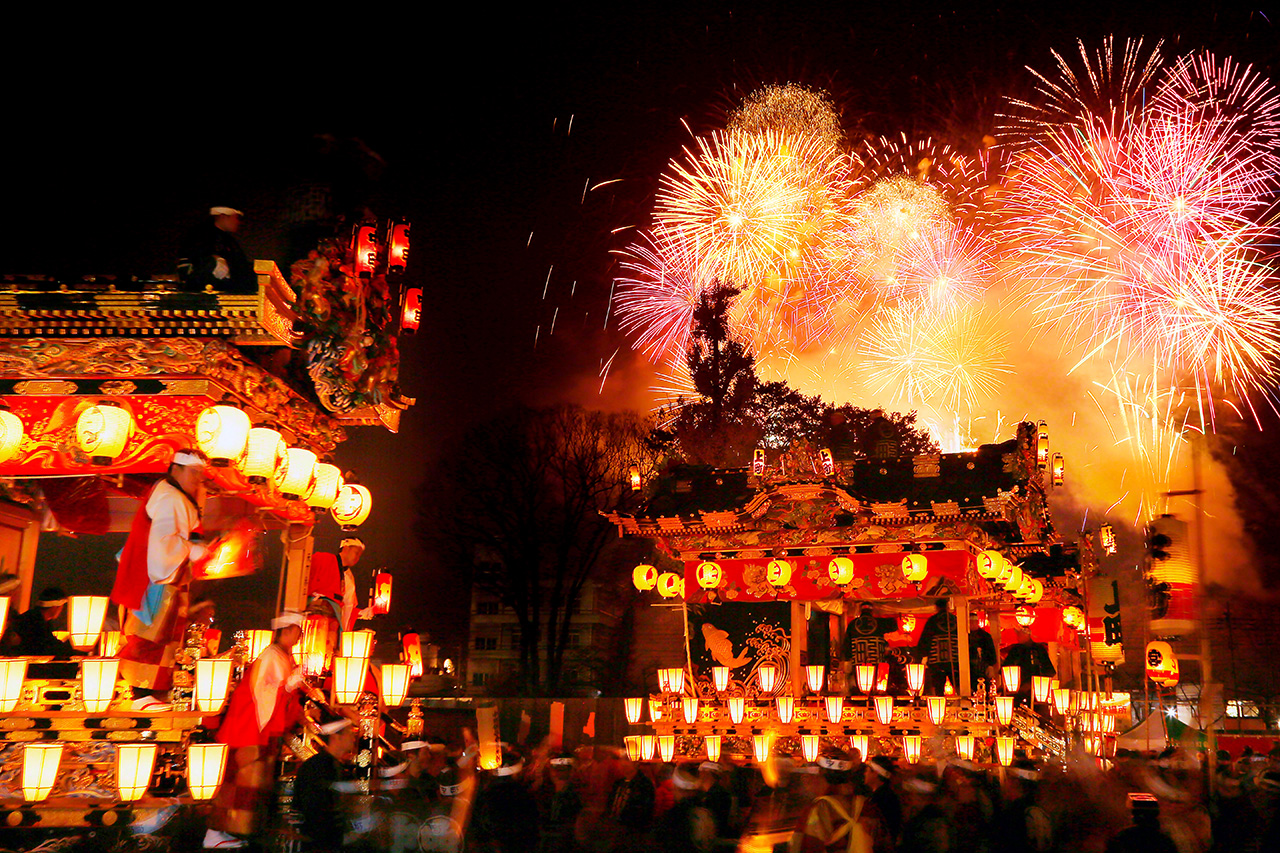
The Chichibu Night Festival in Saitama Prefecture (December 2-3) is known for its extravagant halberds decorated with umbrellas and its floats. The female deity of Chichibu Shrine and the male deity of a sacred mountain surreptitiously meet only on this night of the year. It was included as one of the Japanese float festivals on the UNESCO representative list of the Intangible Cultural Heritage of Humanity.

The Sannō Festival that reenacts the marriage between a pair of enshrined deities at Hiyoshi Shrine in the city of Ōtsu in Shiga Prefecture. During a festival ritual, four portable shrines are dropped onto the ground to represent childbirth.
Disasters and the COVID-19 Pandemic
My view of festivals changed dramatically as a result of the Great East Japan Earthquake and tsunami of March 11, 2011, that caused such widespread damage. This event threatened peaceful ordinary life in Japan, leading the country to become shrouded in a mood of self-restraint. Though there was a brief period when I had to mentally prepare myself for the prospect that I would be unable to photograph festivals for a while, localities throughout the Tōhoku region announced that they were going to hold their summer festivals. Paramount among these was the Hachinohe Sansha Taisai, held in the city of Hachinohe, Aomori Prefecture. This decision was made to allow the people in areas affected by the disaster to pray for recovery from the earthquake and tsunami through their summer festivals. Driven by my sense of mission as a photographer, I went to the region to cover the festivals during July and August of that year.
I photographed the people participating in festivals held in localities that had been dramatically transformed by the disaster, and my camera revealed their burgeoning enthusiasm. My mission was to show the people who were so anxious about the fate of their neighborhoods this image of renewed hope. Festivals are one of the bonds that connect people to their native regions. The festivals held at each of the localities I visited represented points connected by meridians that eventually linked them to the whole of Japan.
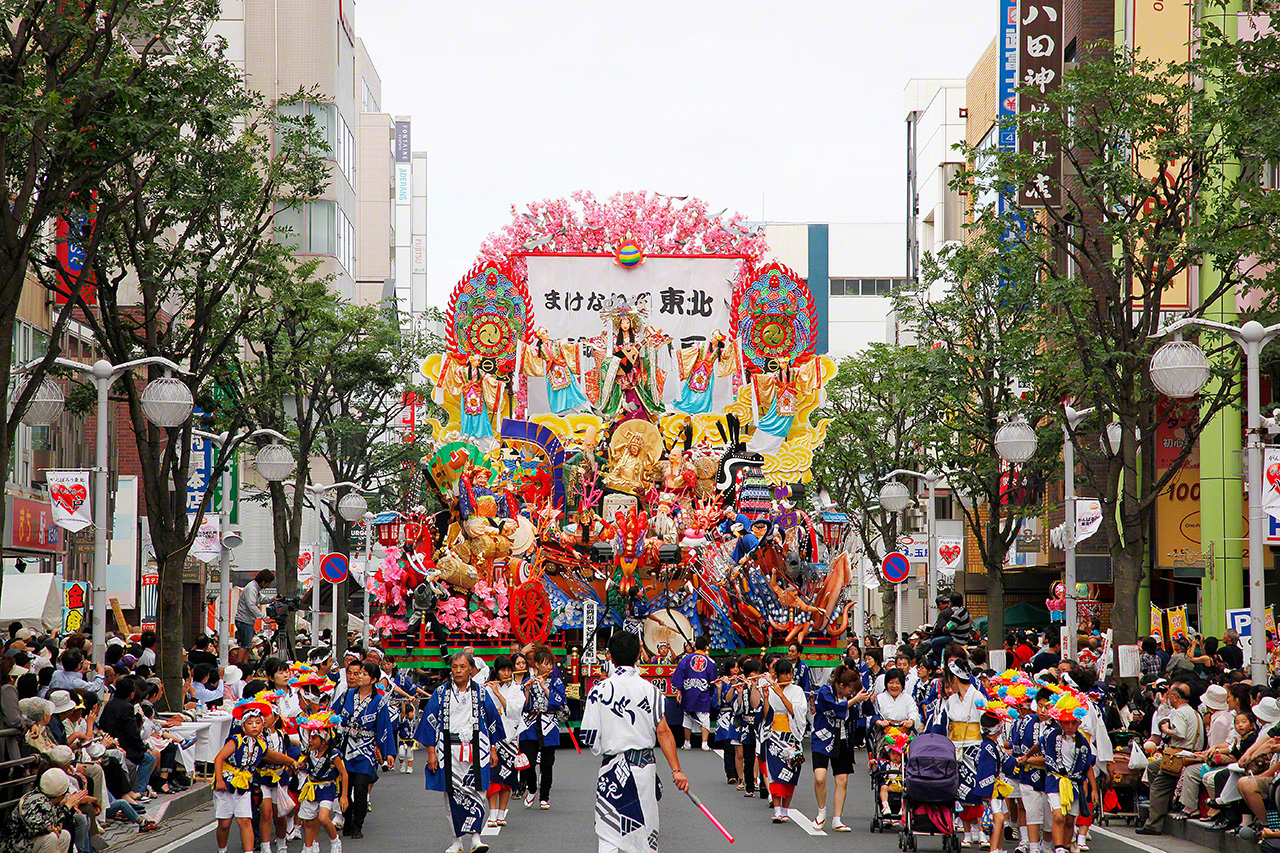
The Hachinohe Sansha Taisai (July 31‒August 4), known for its flamboyantly decorated floats. This was also one of the Japanese float festivals on the UNESCO representative list of the Intangible Cultural Heritage of Humanity.
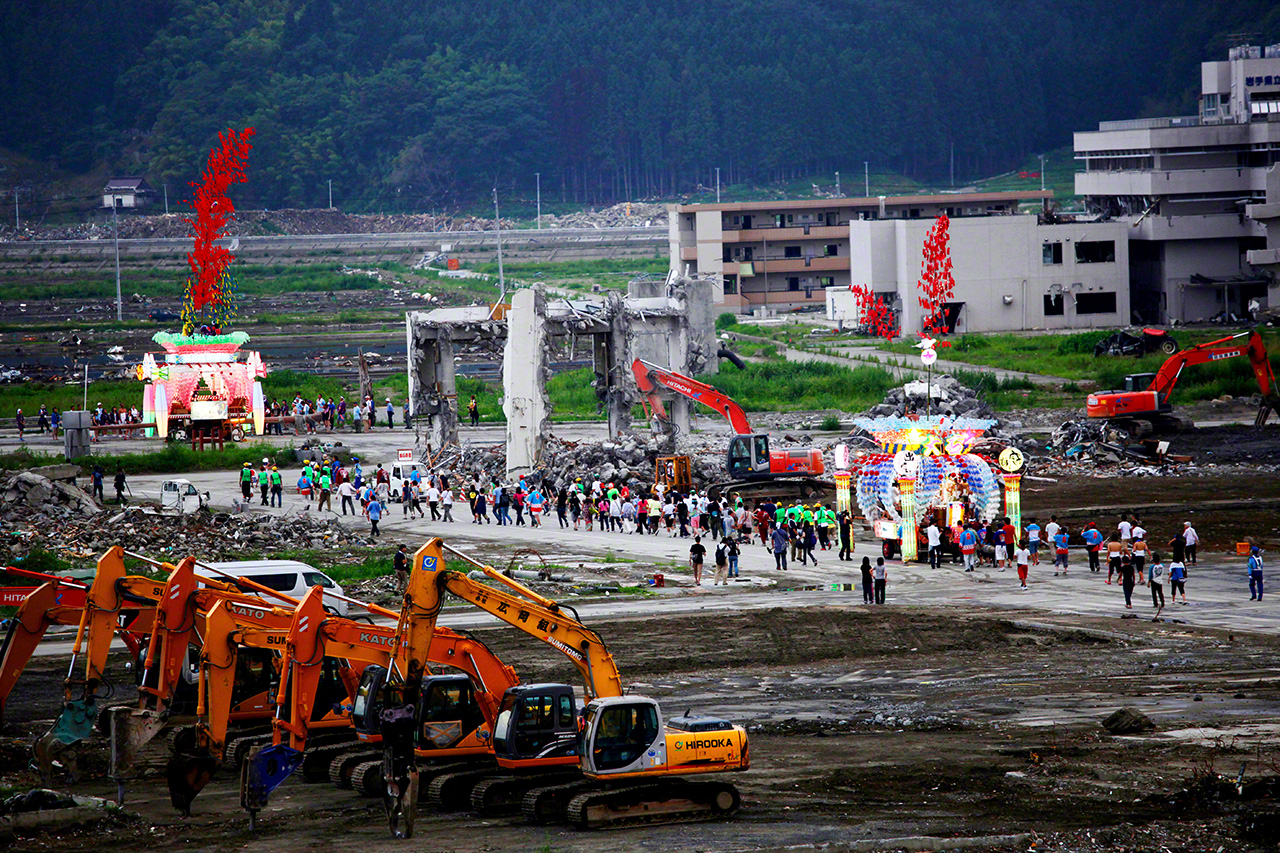
The Moving Tanabata (August 6‒7) is a festival held as a memorial for ancestors that has been passed down in the city of Rikuzentakata, Iwate Prefecture. Since the Great East Japan Earthquake and Tsunami it has also included prayers for the repose of the souls of the dead and for the region’s recovery from the disaster.
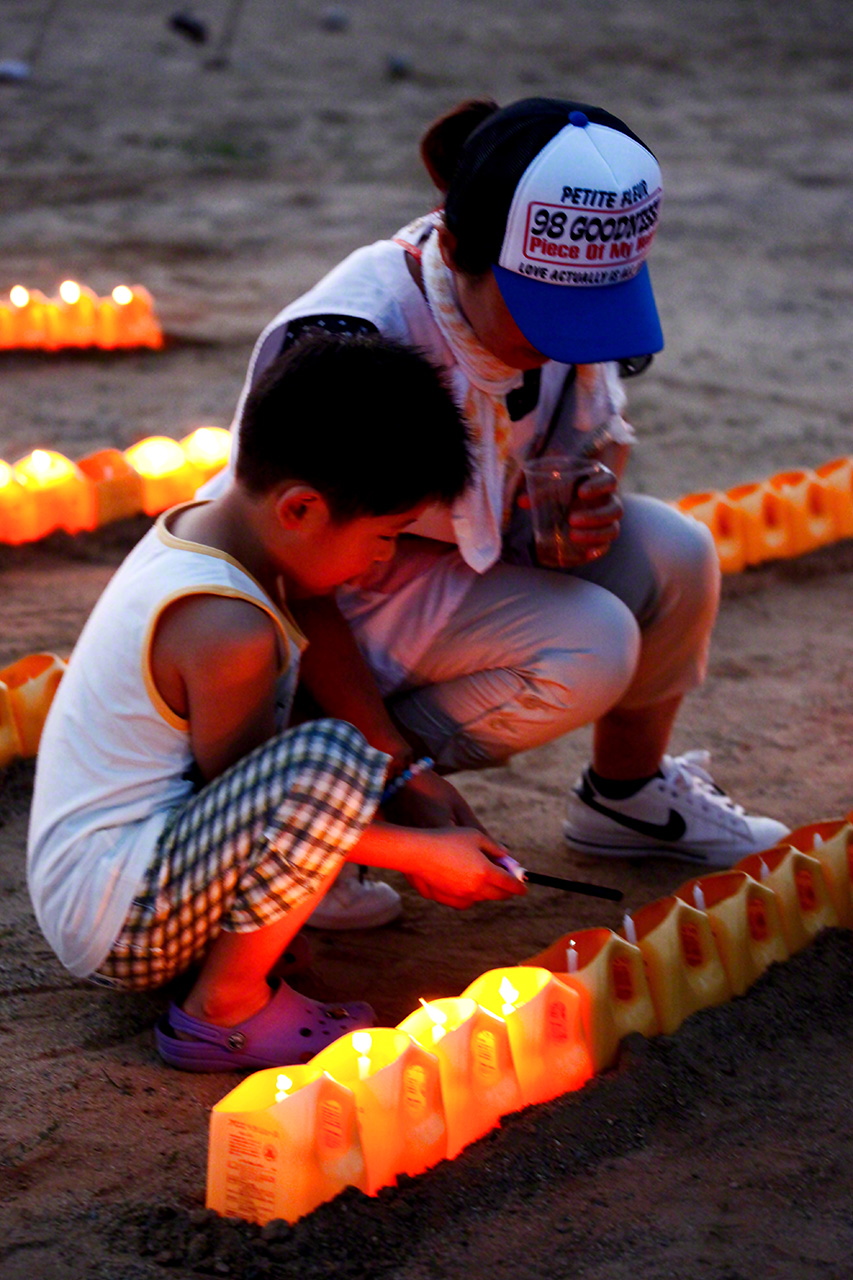
At the Sōma Nomaoi Festival (late July) in Fukushima Prefecture flames are lit as an offering of appreciation to horses. In 2011 it included prayers for the repose of the souls of the dead and thanks to those who offered support to the region in the wake of the earthquake and tsunami.
The COVID-19 pandemic that began in March 2020 led to the decision that festivals throughout the country would be temporarily suspended. As this suspension entered its third year, concern about the continuation of the traditions of these festivals increased, and localities throughout the country were conflicted over whether or not to hold their festivals. As festivals began to be held once again—albeit on a smaller scale than previously—I began to receive invitations to record them with my camera, along with emphasis that they were “completely local events.”
As we emerged from the “new ordinary” during which we had to avoid even contact with others, the days of the extraordinary (hare) returned. People’s facial expressions grew brighter and they recalled the freedom associated with carnivals. We realized that festivals were originally not simply a tourist attraction but rather something that people used to pass on the traditions of their native regions to the next generation.
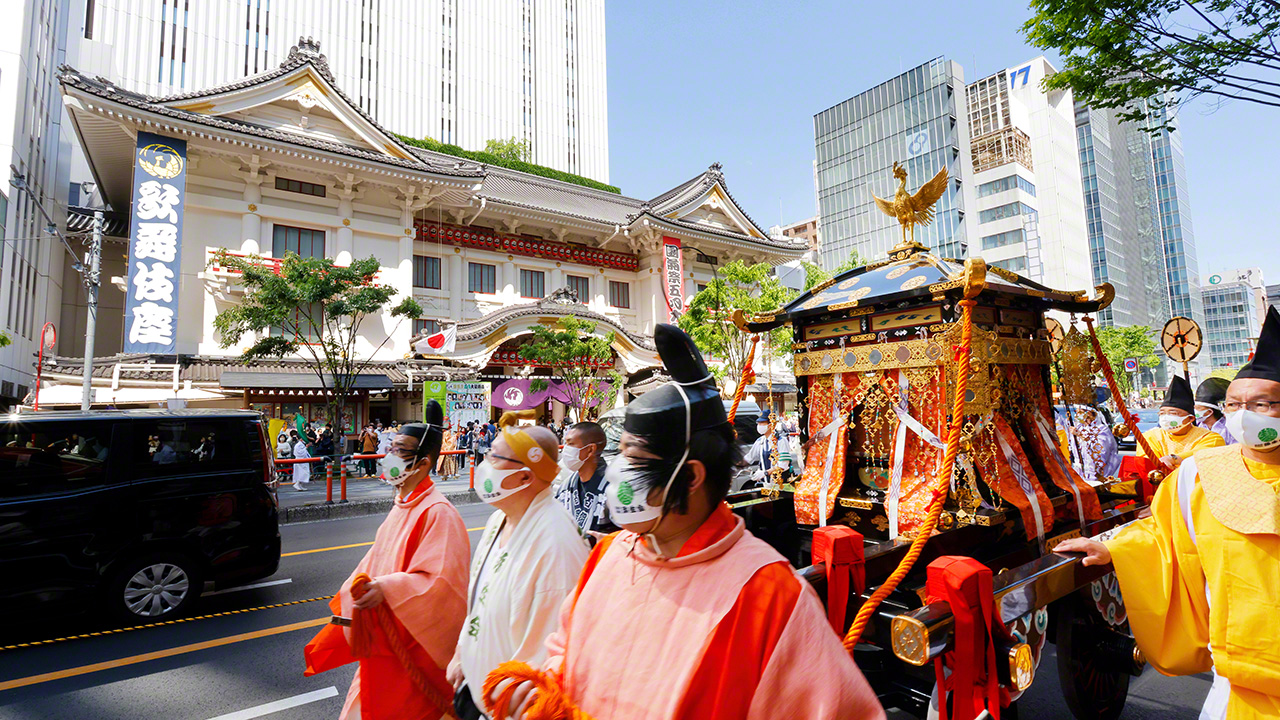
At the 2022 annual festival at Teppōzu Inari Shrine in Chūō, Tokyo, (May 2‒5), the portable shrines were paraded on carts rather than carried and procession participants did not shout or call out as they usually do, in order to prevent the spread of COVID-19.
There are, however, many localities with limited resources that are losing their ability to pass on their festival traditions due to flight out of the rural areas where they are located and the aging of the population. Still, there are cases in which young people who have left their hometowns and people who newly move into these areas interact with long-term residents and breathe new life into the traditional festivals. These events unify the people and land, and inject energy into local regions. I think it is safe to say that many Japanese people gain a sense of joy from this bond.
As long as there are people who require the kind of joy that hare produces, the diversity of festivals must not be lost. And I will continue to offer what aid I can with my photographs.
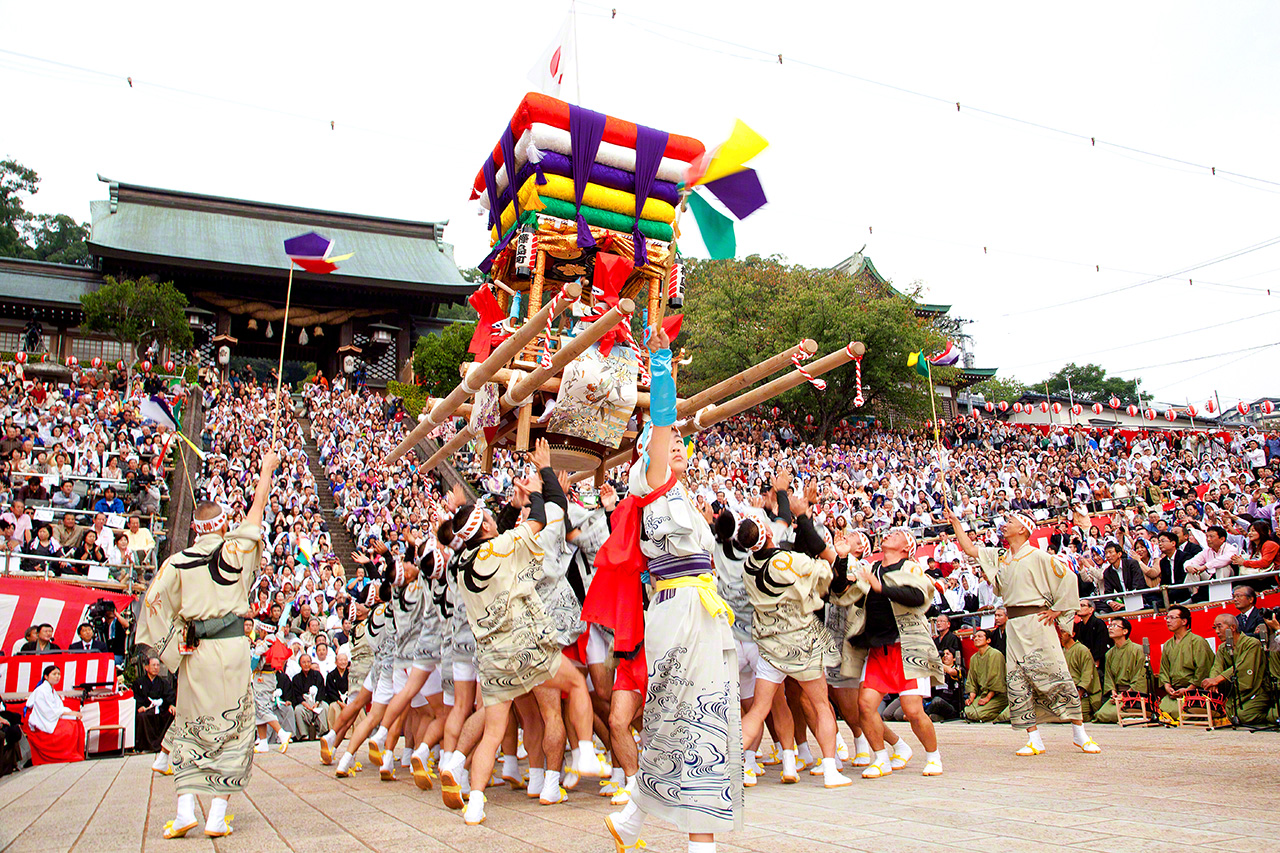
The Kokko-desho dance is the highlight of the Nagasaki Kunchi (October 7‒9). At the climax, a float carrying drums with four children riding on top is thrown and festival-goers stretch out their hands to catch it.
*Dates given for festivals are the days they take place on in a typical year.
(Originally published in Japanese. Photos and text by Haga Hinata. Banner photo: Mikoshi-Shinkō (transfer of the deity) at the Sannō-Sai at Hiyoshi Shrine in Shiga Prefecture.)